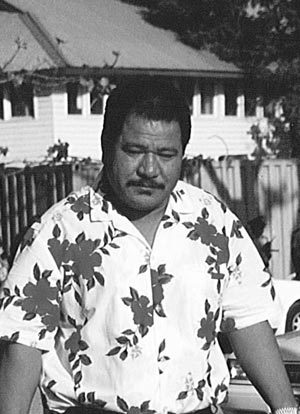Tuvalu - a brief history
Voyagers from Samoa, Tonga and Uvea (Wallis Island) are believed to have settled Tuvalu about 2,000 years ago. However, in 1986 scuba divers found an underwater cave containing evidence suggesting possible human habitation more than 8,000 years earlier.
European contact... and World War Two
Spanish explorer Alvaro de Mendana de Neira was the first European to sight Tuvalu in 1568; next was a Spanish trader in 1781. From the 1820s they were followed by whalers, traders, blackbirders, and, later in the century, London Missionary Society missionaries who came initially from Samoa. Britain colonised and named the Ellice Islands in 1892 when they became part of the Gilbert and Ellice Islands Protectorate (later Colony). During World War II, American military bases were set up on several islands and Funafuti airfield was used to launch raids against the Japanese in both the Gilbert and Marshall Islands. Funafuti became the administrative centre of the Colony during the war and suffered Japanese bombing raids in 1943.
Separation from the Gilbert Islands, now Kiribati... and independence
After the war, numbers of Tuvaluans migrated to the Gilbert Islands in search of education and work. Their growing numbers in the public service began to create tensions and rivalries intensified between Micronesian Gilbert Islanders (I-Kiribati) and the Polynesian Ellice Islanders (Tuvaluans), many of whom favoured separation and an independent future. A referendum in 1974 resulted in a clear preference for separation. Tuvalu accordingly was granted self-government in 1975 with its own constitution and full independence in 1978.
Few resources, but good management
With a population of some 10,000 spread over nine small atolls, Tuvalu has few economic resources. Many Tuvaluans have sought work overseas, including on German ships, Japanese fishing vessels and, earlier, at Nauru’s phosphate mine. Unlike other small Polynesian island groups, Tuvalu has no special relationship with a larger economy to which its citizens could freely move, although New Zealand has accepted some immigrants from Tuvalu over the years. Recognising that it would have to fend largely for itself, Tuvalu’s early leaders promoted the idea of a Trust Fund that could generate investment revenue. Eventually, New Zealand agreed in 1987 to start such a fund. Australia, Britain, Japan and Korea also contributed and Tuvalu added $A 1.6 million. Twenty years after independence the fund was worth $A57 million. Historian and commentator Ron Crocombe described the Tuvalu trust fund as a significant success.
The challenge of climate change and rising sea levels
The greatest threat Tuvalu faces, however, is rising ocean levels.Tuvalu’s remaining atolls are approximately four metres above sea level and a number of atolls are already uninhabitable. It is estimated that in fifty years, Tuvalu as a territorial and inhabited land mass will not exist. As sea damage increases many Tuvaluans doubt their homeland can remain their home for long. Tuvaluans are likely to become the first entire population of environmental refugees. Presumably countries like New Zealand (which already has hundreds of thousands of Polynesians, both Māori and Pacific Islanders) and, if necessary, Australia, will accept Tuvaluans forced from their homelands.
Every Tuvaluan worries what will happen as the ocean rises.
Significant events since independence
1979 Treaty of Friendship formally ends US claims to Funafuti, Nukufetau, Nukulaelae and Niulakita islands.
1987 NZ, Australia, Britain, Japan, Korea and Tuvalu contribute to Tuvalu Trust Fund.
1990s Tuvalu begins selling internet domain rights to “.tv”.
2000 Tuvalu becomes 189th member of the United Nations.
2006 Smaller Island States Unit established by Pacific Islands Forum to serve Cook Islands, Kiribati, Marshall Islands, Nauru, Niue, Palau and Tuvalu.
2008 Prime Minister Apisai Ielimia addresses UN General Assembly on Tuvalu's vulnerability to the consequences of climate change.

Hon.Bikenibeu Paeniu